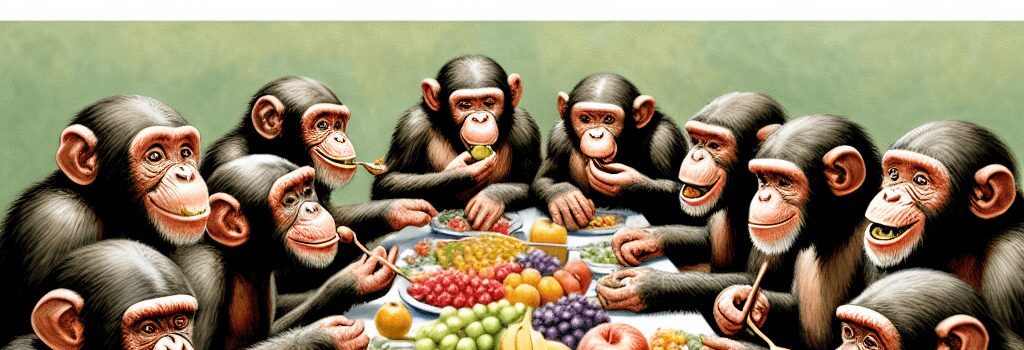Chimpanzees, Fruit, and Social Bonds

Recent studies have turned the spotlight on the social habits of chimpanzees in their natural habitats, revealing that their fondness for communal feasting may share deep evolutionary ties with human group eating rituals. These insights not only shed light on animal behavior but also offer a window into the early social dynamics that have influenced human cultural evolution.
Evolutionary Foundations of Group Feasting
Evolutionary biologists have long theorized that group feasting played a significant role in our ancestors’ survival. The practice facilitated resource sharing, strengthened social bonds, and initiated cooperation. Current research leverages advanced tracking technologies and statistical analyses to quantify these behaviors, demonstrating that such communal activities are as much about social cohesion as they are about sustenance.
- Enhanced survival through shared resources
- Reinforcement of social hierarchies and alliances
- Neural and hormonal markers associated with group bonding
Technical Analysis of Primate Social Behavior
Recent breakthroughs in sensor technology and artificial intelligence have enabled a new level of precision in studying primate behavior. High-resolution cameras and wearable sensors, coupled with AI-driven data processing algorithms, capture intricate details of individual and collective behaviors. These tools have made it possible to analyze neural activations during social events and correlate them with physical interactions, such as joint foraging and shared consumption of food that includes naturally fermenting fruits.
Expert Opinions and Recent Insights
Leading experts in primatology and evolutionary neuroscience are increasingly convinced that the act of group feeding is not just a response to resource availability but a strategic behavior that has been genetically ingrained over millennia. Dr. Elaine Marlow, an authority in evolutionary psychology, remarks, “Modern AI techniques are validating what many of us suspected: the neural circuits that govern communal dining have deep evolutionary antecedents.” While recent exploratory missions have yet to unearth entirely new datasets, re-assessed findings through modern computational methods continue to support earlier observations with higher precision than ever before.
Implications for Modern Human Social Dynamics
The ramifications of these discoveries extend far beyond primate studies. By drawing parallels between chimpanzee group behaviors and human social structures, researchers propose that the modern human penchant for communal activities—from social media communities to co-working spaces—may have its origins in these ancient survival strategies. This perspective invites a reconsideration of our daily routines, suggesting that our current digital and physical meeting places are modern extensions of evolutionary practices.
Future Research Directions and Technological Integration
Future research will likely focus on integrating electromagnetic sensor arrays with cutting-edge machine learning models to better understand the neural pathways engaged during these social rituals. Combining data from various technical platforms, including IoT devices in wildlife research, promises to refine our understanding of the subtle cues involved in group behavior. Such interdisciplinary approaches are expected to yield breakthroughs in both evolutionary biology and the development of new AI-driven monitoring tools.
Conclusion
The convergence of evolutionary studies and advanced technology has illuminated how deeply intertwined our social behaviors are with those of our primate cousins. The research affirms that the human appeal for communal feasting not only enhances group survival but also cements the foundation of social structures. This evolving narrative is a testament to how modern scientific tools can unravel the complexities of our ancestral past, offering a richer understanding of both human and animal behavior.